Godzilla Minus One (2023)
Directed by: Takashi Yamazaki
Written by: Takashi Yamazaki
Starring: Minami Hamabe, Ryûnosuke Kamiki, Sakura Andô, Sasaki Kuranosuke
JAPAN
IN CINEMAS NOW
RUNNING TIME: 124 mins
REVIEWED BY: Dr Lenera
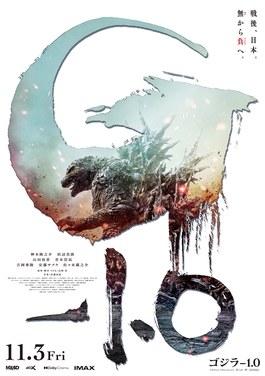
Kamikaze pilot Koichi Shikishima decides not to kill himself in the service of his country and instead lands on Odo Island where the unit he finds is attacked, and almost entirely wiped out, by a creature known by the natives as Godzilla. He returns to the ruins of Tokyo racked with survivor’s guilt. With both his parents dead, he finds renewed purpose when he meets fellow survivor Noriko who’s caring for orphaned infant Akiko. The three build an unconventional family over the next two years with Koichi finding work as a minesweeper ridding the waters of leftover US and Japanese sea mines. Then a much larger Godzilla, made that way by American atomic bomb tests, shows up….
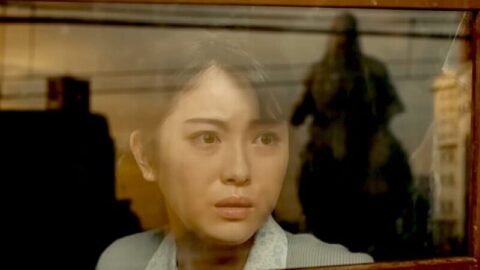
Has there ever been a better time to be a Godzilla fan? Okay, I wish that I was around in the ’60s so that I could have experienced some of the offerings from the Golden Age of Toho Studios on the big screen, and l have such fond memories of reading about such films as a kid and imagining just how exciting they sounded, but there’s no doubt that we’re going through a really good period right now, with two separate franchises featuring the Big G being made in both Japan and the United States, the latter even having the related TV series Monarch, and even the Japanese ones being shown in UK cinemas; between 1985’s The Return Of Godzilla and Shin Godzilla from seven years ago, only 2000’s Godzilla 2000 made it into western cinemas and that didn’t include those in the United Kingdom. By contrast, when I was first getting interested in Godzilla and his monstrous brethren, I wasn’t able to see any of the films until we got a video player, and even then only a few. Back then such films were mocked by ignorant critics, but right now, Godzilla Minus One is not just getting very good reviews but has been publicly praised by many including Gareth Edwards and Michael Dougherty, the directors of Legendary’s Godzilla and Godzilla King Of The Monsters, and is a solid hit too, actually outgrossing several major American pictures. This is all great to see, especially from the point of view of a lifetime fan who for many years felt like he was a member of some weird cult for loving the spectacle of giant monsters wrestling with each other and trampling model cities [usually poor Tokyo], though one doubts that it would have got anywhere near as much attention if it had been a more traditionally campy entry. And, more to the point, is it really as good as the majority seem to think, some even calling it the best Godzilla movie ever made?
Well, I struggle to state which Godzilla film is the greatest. Maybe the very first one, in its original Gojira form, is the best artistically, though it’s some of the ’60s and ’90s entries I return to most often because they’re more fun while still being well made and not totally silly. I don’t think that Godzilla Minus One [the title refers to the state of Japan at the time of the story, the country being “zero” just after World War 2 and then “minus one” when Godzilla shows up] belongs in the top five, but it’s still a highly impressive achievement which has a pretty tremendous first two thirds; the final third is at a lower level but still often impresses. I imagine that many critics are stating two principal reasons as to why it’s so good. One is probably that it has strong themes which take it close to Gojira‘s evoking of Hiroshima and Nagasaki, the setting of 1947 Japan used as an opportunity to look at things such as national pride and survivor’s guilt. The other is no doubt the fact that it has a powerful human dimension which ensures that the talky bits aren’t just filler until we get to the monster action. I would actually disagree with the opinion that the people in all the other Godzillas are uninteresting, but there’s no question that this is a film where the central humans are as important as Godzilla and we grow to really care about them, which is probably just as well seeing as full emotion is sometimes really gone for here. As for Godzilla himself, he has even less screen time than he did in Shin Godzilla, something which has inspired a bit of a backlash in some fan circles, but as I always say these people should take a look at some of the very early entries, especially Invasion Of Astro Monster and Godzilla Vs The Sea Monster. Writer / director Takashi Tamasaki sometimes quotes bits from Gojira as well as clearly being inspired by Godzilla, Mothra, King Ghidorah: Giant Monster’s All Out Attack, yet has managed to craft quite an individualistic entry even if at times it seems pretty conventional too, with the script certainly following a very familiar structure.
So we begin in 1945, but on the familiar place of Odo Island where Godzilla made his very first appearance in 1954 to Japan’s cinema-going public. It’s here where Koichi Shikishima lands, feigning technical issues with his plane so he doesn’t have to die in a kamikaze crash. On Odo is a group of soldiers including mechanic Tachibana who picks up that Shikishima fled from his duty. That night, a dinosaur-like creature known by the natives as Godzilla, attacks, which instantly makes one recall the rather bonkers Godzilla Vs King Ghidorah from 1992, where some folk went back in time in 1945 to a Lagos Island containing Japanese soldiers to try to kill a dinosaur which will otherwise be later turned into Godzilla. In that film, the creature saved the Japanese from American troops; here, it just attacks the Japanese. It wasn’t done particularly well in the older production, but here it’s not just exciting but a bit scary in a scene which is virtually horror, not to mention feeling rather Jurassic Park with even some of the same angles being used. Neither this nor Godzilla Vs King Ghidorah attempts to explain what on earth this creature was doing at large though. Maybe one day we’re get a prequel that will go into this? Shikishima gets in his plane but cannot bring himself to shoot the monster and is then knocked unconscious. He wakes up to find dead bodies all over the place and that Tachibana is the only other survivor, who understandably blames Shikishima for failing to act. A really tormented, guilt-ridden Tachibana returns home to Tokyo to find that his parent were killed in that city’s bombing attack and bis neighbour chastising him for not dying for the cause like he should have done. I’m quite surprised that we didn’t have a scene of him contemplating harikari as a result of all this.
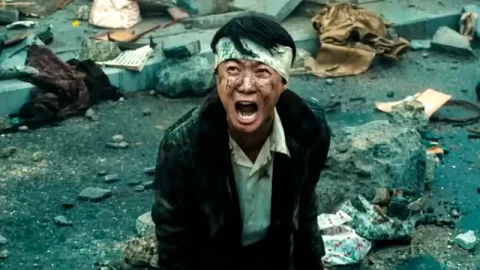
Shikishima encounters a woman, Noriko Oishi, who may or may not have been prostituting herself to survive, and who’s just rescued an orphaned baby named Akiko. They begin to live in his house, he supporting them by getting a job as a minesweeper which makes sense; he would automatically go for such a dangerous occupation. He’s very touchy about the war though, of course. The trio even get a montage, but we become very emotionally invested in them, and I’d have been content with even more footage of them living together during this perhaps-too-slow-for-some section, even though Shikishima and Noriko don’t seem to have a romantic relationship; they sleep in separate beds anyway. However, Godzilla needs to show up again at some point, and real news footage is utilised as he’s mutated and enlarged by the American nuclear tests at Bikini Atoll, just as before. In May 1947, Shikishima and his minesweeper crew are given the impossible task of stopping Godzilla’s approach to Japan, in reality stalling for time for larger vessels to arrive. They release a mine into Godzilla’s mouth and detonate it, doing significant damage, but it quickly regenerates and we get what has become a major event in Godzilla films; the first unleashing of his heat ray, this time upon a poor unfortunate ship. And you just know that he [or she – wouldn’t it be great if we get a film that addresses what sex Godzilla is?] will soon be moving onto land, this time Ginza, a city that I don’t believe Godzilla has ever destroyed before. Of course the military prove to be totally ineffective, this Godzilla not even being bothered to fight back. But maybe hope for Japan does exist.
Much has been made of the fact that the visual effects are better than the ones in some Hollywood productions of late, even though the budget was far lower. It’s probably worth saying that said Hollywood productions would have used much more CGI, the main reason for CGI being so erratic in modern cinema being that effects companies are spreading themselves thin because so much CGI is being used. But nonetheless the quality of the effects in here is quite phenomenal, certainly surpassing the ones in Shin Godzilla which were generally fine but had a few iffy moments, most notably when Godzilla didn’t quite seem like he was part of his surroundings. Here, what we see is easily the equal of what we see in the Legendary series, with Godzilla convincing greatly as a living, breathing creature. The visual highpoint, of course, is when Godzilla uses his breath to virtually incinerate a city. There was a similar scene in Shin Godzilla which was longer and had haunting music playing over it, but suffered from some shots of buildings being destroyed looking extremely poor; here, it all looks good. Godzilla’s design is clearly inspired by the one in Godzilla The Ride: Giant Monster’s Ultimate Battle, a motion simulator ride where participants are in the centre of a monster battle. Yamazaki has said that the Godzilla, Mothra, King Ghidorah: Giant Monsters All-Out Attack design was also a major inspiration, though to me it looks more like the suit used in Godzilla Vs Biollante [1989] and its four direct successors, with its smallish head and longer neck [and thankfully no ping-pong eyes like the last incarnation]. An original addition is the dorsal fins being more spiky than ever seen before.
Yet, despite all this talk of effects and the title character, it’s possible that the film’s greatest moment features its leading human character. At one point during all the devastation, Shikishima just stands there and screams with agony. He’s not being hurt physically, but he’s undergoing incredible trauma because even before this he’s already seen mass deaths and destruction and experienced such fear, such inability to do anything. It’s an incredibly powerful moment, like the scream of a nation which hadn’t long been defeated in the most terrible manner [I’m not here to debate whether it was right or wrong – perhaps I should have made time to review Oppenheimer to present my views on the subject – but it was definitely terrible for the Japanese] and is suffering more tragedy on a scale which is even bigger. Yamazaki’s script only slightly criticises the Japanese government and traditional Japanese notions of nobility, honour and sacrifice, but we’re certainly left to ponder on such things while remaining entirely sympathetic to Shikishima’s plight and totally understanding of his torment. He’s a person who supposedly does the wrong thing not once but twice in quick succession and, indoctrinated as he’s been, has to live with it while struggling to survive in post-war Japan even before Godzilla first rises out of the water. Ryunosuke Kamiki gives quite a complex performance as Shikishima, though it may be little Sae Nagatani, even if you don’t normally care for moppets in movies, who will move you more as Akiko. She’s given some moments which aren’t really overplayed but which should definitely melt the heart of many a viewer. Unfortunately Minami Hamabe isn’t given much to play with as Noriko, but there are a few decent supporting characters to enjoy.

Cinematographer Koichi Shikishima gives the film a rather nostalgic period sheen, while Naoki Sato’s mostly simple musical score tends to either emphasis the emotion, though in a very unobtrusive way, or work more as sound effects. As is sometimes the case, some music from Akira Ifukube [the composer who defined the musical aspect of Godzilla much like John Barry did with James Bond] makes an appearance, here Ifukube’s two main themes for the Big G. They don’t stick out as much as usual, perhaps because they’re clearly new recordings which fit better into Sato’s work than original ones, with some chord tweaks in one of them and the other being played very fast [it works!]. We could have perhaps done with more music during the finale, but then again as I’ve said before the final third disappoints a little, and largely because it’s so formulaic. Otherwise there’s nothing particularly wrong with it except us being asked to accept that such a small team can kill [sorry, defeat] Godzilla. One occurrence right at the climax is something of a surprise but also appropriate, though a revelation, following on from a shocking moment of tragedy much earlier, at the very end smacks of studio interference in an often downbeat film until we realise that, actually, it’s also appropriate. This is because this is a film which throughout has been about choosing life. Which might sound weird for a Godzilla film, but then again we know that he [or she] will be back, and that it’s very likely that some interesting stuff will be done in it. Yes, it’s a good time to be a Godzilla fan.






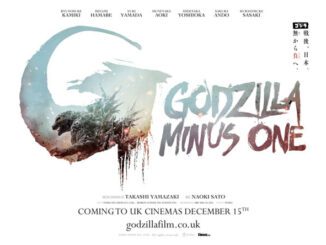
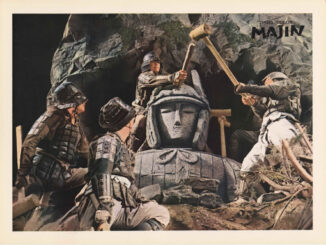
As grim and depressing a Godzilla movie you’ll unlikely ever see, even if it’s got a happy ending of a sort, there’s a lot of despair, grief, soul-searching tragedy and trauma to get through.
As a Godzilla fan ever I found myself hoping he would just die and leave these poor people in peace long before thr resolution.
It’s a bruising medley of real life fantasy delivering gut wrenching torment in the name of entertainment.
Ultimately it does for Godzilla what Se7en did for cop movies.
Very eloquently put sir!